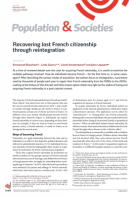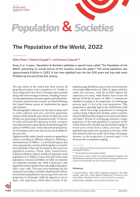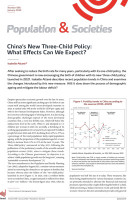
@@src2@@
Demographic surveillance in the field to capture African population trends
Population and Societies
n° 433, April 2007
For many years, the French roads were among the most deadly in the European Union, but this is no longer the case. With fewer than 5,500 deaths recorded in 2005, there is no doubt that the government measures introduced over the last 30 years have been highly effective. But could even more lives be saved? Five specialists examine the factors behind traffic accident mortality in France, the potential for reducing road deaths even further, and the experience of the United States in this area.
Researchers have developed demographic surveillance systems in several specific regions of Africa. Their purpose is to provide accurate local data, in addition to that of national censuses and surveys, with a view to understanding the mechanisms behind demogra-phic and health trends. This is notably the case in Senegal, where three rural populations have been observed for several decades. The research findings obtained have led to a downward adjustment of WHO maternal mortality estimates for the country and have shed new light on the causes of maternal death. They have also shown that the very slow overall diffusion of modern contraception is not the consequence of cultu-ral resistance: when contraception is made available by strongly motivated health personnel, it can spread very rapidly, even in economically disadvantaged rural areas.











